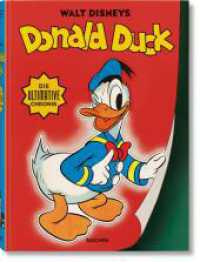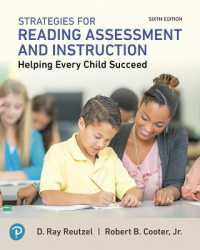- ホーム
- > 洋書
- > 英文書
- > Literary Criticism
Full Description
Left Out presents an alternative and corrective history of writing for children in the first half of the twentieth century. Between 1910 and 1949 a number of British publishers, writers, and illustrators included children's literature in their efforts to make Britain a progressive, egalitarian, and modern society. Some came from privileged backgrounds, others from the poorest parts of the poorest cities in the land; some belonged to the metropolitan intelligentsia or bohemia, others were working-class autodidacts, but all sought to use writing for children and young people to create activists, visionaries, and leaders among the rising generation.Together they produced a significant number of both politically and aesthetically radical publications for children and young people. This 'radical children's literature' was designed to ignite and underpin the work of making a new Britain for a new kind of Briton. While there are many dedicated studies of children's literature and childrens' writers working in other periods, the years 1910-1949 have previous received little critical attention. In this study, Kimberley Reynolds shows that the accepted characterisation of inter-war children's literature as retreatist, anti-modernist, and apolitical is too sweeping and that the relationship between children's literature and modernism, left-wing politics, and progressive education has been neglected.
Contents
Introduction Radical children's literature and the attempt to rewrite Britain
1: War and peace in radical writing for children
2: Moscow has a plan! Representations of the Soviet Union in radical children's literature
3: Aesthetic radicalism: avant-garde and modernist books for British children
4: Radical ruralism: the transformative power of the landscape
5: Making better Britons: health, fitness, and sex education
6: Rebuilding Britain through radical children's books
Conclusion Radical visions, compromises, and legacies
Appendix Radical children's publications
Bibliography







